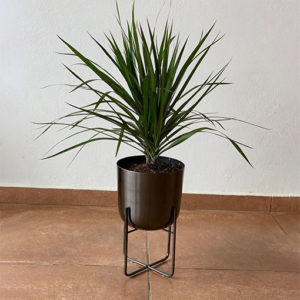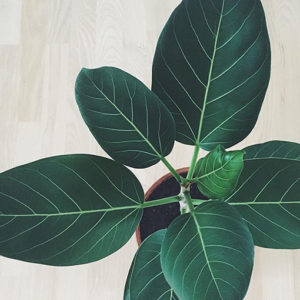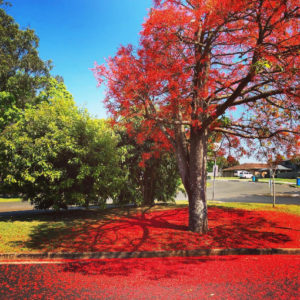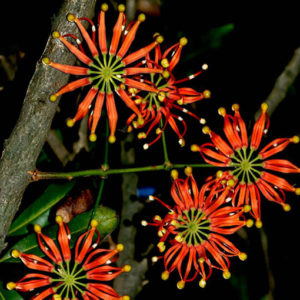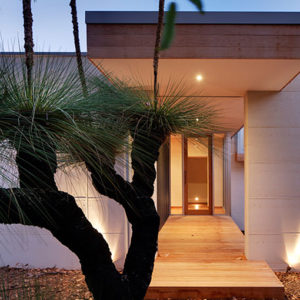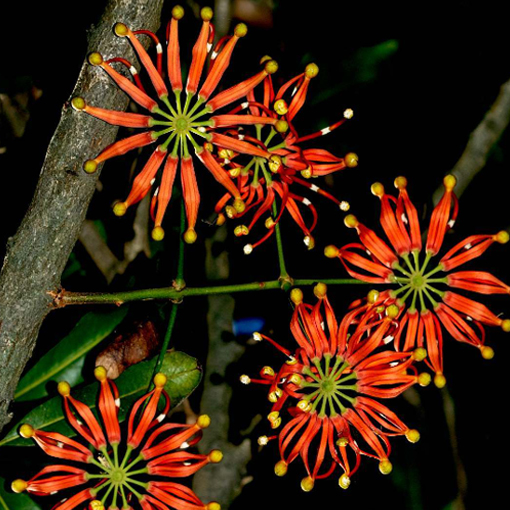
Have you seen the Australian native Firewheel Tree flower?! 🌼🏵️ Ain’t she grand? ❣️😍 A shock of bright red among the deep greens of the rainforest foilage! Definitely an eye catching flower in the garden! 🌳🌳🌳
📷: @lowaje_88
Where to buy a Firewheel Tree in Australia?
Why we’re glad you asked as we do our best to have a steady supply of Firewheel Tree in stock.
Firewheel Tree Introduction
The Stenocarpus sinuatus, often known as the Firewheel tree is famous for its striking and remarkable red/orange flowers, which as the name suggests can look like wheels of fire! From the family Proteaceae, it can grow to be extremely large in its natural Australian rainforest habitat. It has the potential to reach a height of 30-35 meters; however, in cultivation and at lower temperatures, it will generally be much shorter. It is native to climes ranging from subtropical to tropical, but it may also grow in more temperate zones. When it is established, it tends to be a Tree with longevity. It is also possible to cultivate it as an indoor plant for its attractive foliage.
Although it is most successful in soil with rich and sandy loams, it may bloom in most types of soil. It can grow in full sun to partial shade. Seeds and cuttings can both be used in the propagation phase. The unique flowers have the appearance of pinwheels, and the leaves of the plant are also quite lovely.
Firewheel Tree – Leaves and Flowers
The Firewheel tree has leaves with a glossy dark green surface, while the underside is lighter in colour; they might have an oval, slightly curved, or irregular shape. They range in length from 14 to 25 centimeters but can be as long as 40 centimetres, with a width of 3 to 5 centimeters. Leaves are often thinner on branches that are more visible. Each leaf has a single prominent vein that travels down the middle of its surface.
The length of Flowers ranges from 2 to 4 cm and they are a bright red colour with a yellow tip. At the very tip of the stalk, they congregate in a pattern that resembles a wheel.
This plant, like many others in the Proteaceae family, has highly varied leaf shapes. Flowers may not appear for seven years or more if produced from seed, but a cutting taken from a mature plant will typically bloom in approximately three to four years.
Firewheel Tree Uses
Firewheel trees, due to their attractive nature are often a popular choice in public locations such as sidewalks and parks, as well as in private gardens. They are also grown indoors in huge containers and used as houseplants; it is quite rare that they would produce flowers in an indoor environment, but the leaves are extremely attractive.
Firewheel Tree Climate
The Firewheel Tree naturally occurs in mid to high-altitude locations of the subtropics and tropics with moderate humidity and temperatures mostly between 10 and 20 degrees and 19 to 30 degrees Celsius during the summer months. Rainfall is usually between 750 to 2500 millimetres per year, with a dry season of 6 months less than.
Firewheel Tree Lighting & Positioning
For Stenocarpus sinuatus to reach their maximum size, they need to be exposed to full sunshine. They can survive well with reduced sunlight but might not flower as abundantly or have foliage that is as vivid. Locations facing West or North of buildings will generally receive the most sunlight. When we talk of a day with full sun, we typically imply a day with at least six hours of full, uninterrupted sunlight. A location that receives partial sun is illuminated by the sun for more than three hours, but fewer than six.
Firewheel Tree Watering
Maintain a consistent watering schedule throughout the year, pausing watering until the soil has nearly completely absorbed its moisture. Plants that have matured can tolerate a dry period for several days. Naturally occurring in the Tropics and Sub-tropics, growing it in temperate climates will involve watering regularly, especially over the hottest months.
Firewheel Tree Soil
The soil should have a high concentration of organic matter, good drainage and should not be calcareous (high lime content). Planting and transplanting should be done in Spring.
Firewheel Tree Fertiliser
Use manure as an Autumn fertilizer for fire wheel tree.
We recommend using our Plant Food available here.
Firewheel Tree Vulnerabilities to Pest and Insects
They have a high degree of resistance to insects and pests.
For more information on how to manage common plant pests, head to our blog here.
Firewheel Tree Pruning
Stenocarpus sinuatus do not require any sort of pruning. Its form cannot be kept through pruning, therefore avoid planting it in a location where the tree will eventually need to be trimmed. Because they are sensitive to wind, the area in which it is situated will need to be well protected.
Firewheel Tree Toxicity to Pets
There is no known toxicity for stenocarpus.
Firewheel Tree Propagation
Stenocarpus sinuatus is usually grown from seeds, and because it starts as a slow-growing plant, it must be kept cold in its initial phases. On the other hand, development speeds up over time. The use of fresh seed is necessary for successful propagation. The possibility for earlier flowering should be increased by propagation using matured cutting or transplanting onto a competent base. It can grow in a wide variety of well-drained soils but avoid the urge to use Phosphorus fertilizers on it. However, Stenocarpus sinuatus will grow better with periodic applications of vitamin supplements.
Growing Firewheel Tree from seed
Use sowing Jiffy 7 Peat Pellets for planting, and soak them in water before placing them in a plastic container. Alternative, there is also the possibility of utilizing regular seed substrate. Plant the seeds on top of the peat pellets and then cover them with a very thin layer of peat approximately 2mm.
The plastic pot should then be placed inside a sealed bag in a pot of 6 centimetres in diameter. After the substrate has absorbed the water, there should be a few millimetres of water remaining at the bottom of the sealed bag and add a few drops of general fertilizer. Make sure the bag is sealed and if there is no loss of moisture, there will be no need to water the plants any more.
Firewheel Tree pro-tip for Growth
For maintaining a proper growth of your firewheel tree apply a balanced, slow-release fertilizer, mulch, and ensure adequate hydration throughout the summer.
Firewheel Tree Design Tips
The Firewheel Tree is a magnificent feature Tree so they look terrific on their own above green grass or a small garden below. The striking red/orange flowers look terrific when next to purple flowers so plants like liriope or natives like Daniella tasmanica with it’s rich blue/purple berries can be a nice accompanying plant. Alternatively, if you’re aiming to have a rainforest like garden, the firewheel tree will be right at home!

